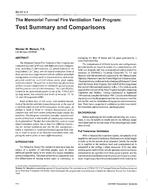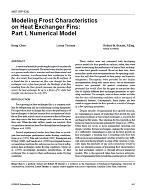Continued development and acceptance of direct digital control (DDC) systems, coupled with growing sophistication of end users, has resulted in a call for standards in the DDC industry. One result is the initiation of research into the development of standard communication protocols for controller-to-controller and controller-tohost communications. Another development is interest in a standard programming language for these systems.
This paper looks at the issue of a standardized programming language, and analyzes the feasibility of using the well-known programming language “C” as the stan- dard. Because of its history of use in the development of computer software, it is often assumed that “C” is difficult to work with. This paper shows how understandable and English-like “C” can be when used for building control applications, i.e., start/stop control sequencing, interlocking, proportional-integral-derivative control of modulating equipment, etc. The “C” language also lends itself to the easy development of functions to accomplish commonplace or repetitive tasks and provides a looping function that allows multiple sets of points to be assigned to a single program. In addition, the primary commands and instructions of the language can be easily redefined to match the jargon of building control.
Citation: Symposium, ASHRAE Transactions, vol. 95, pt. 1, Chicago 1989
Product Details
- Published:
- 1989
- Number of Pages:
- 6
- File Size:
- 1 file , 790 KB
- Product Code(s):
- D-24567


